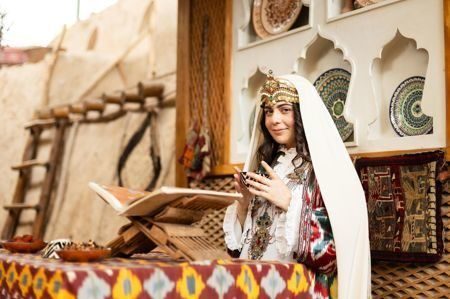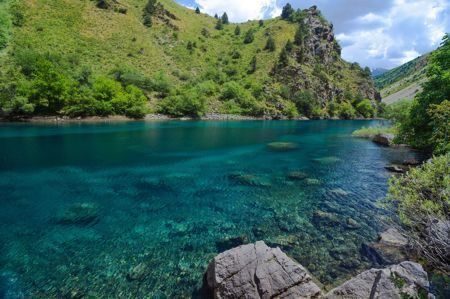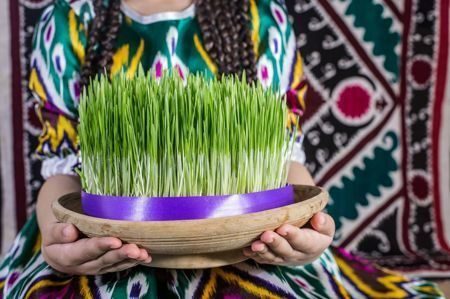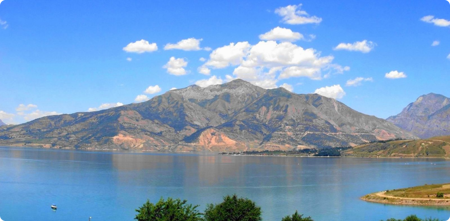Afrasiab (sometimes written as Afrosiab, Afrosiyab or Afrasiyab; Uzbek: Afrosiyob) is an ancient settlement with an area of more than 200 hectares, now a cluster of yellow-gray loess hills in the northern part of the modern city of Samarkand. Afrasiab is the ruins of ancient Samarkand. In the 17th century, the ruins got their name in honor of the mythical king of Turan Afrasiab, one of the legendary heroes of the Persian poet Ferdowsi’s poem “Shahnameh”.
Archaeological research on Afrasiab began in the 1870s, shortly after the conquest of Central Asia by Russia. Archaeological research has confirmed that several centuries before the beginning of our era, Samarkand was one of the largest trade and cultural centers in Central Asia. The city of Markanda was protected from the north and east by cliffs of river channels, and from the south and west by deep ravines.
Samples of ornamented pottery, terracotta figurines, fragments of ossuaries, glassware, various tools, women's jewelry, and coins were found at the site.
It was established that the city was intersected by straight paved streets and divided into quarters - guzars, and was surrounded by powerful defensive walls, inside which there was a citadel, residential buildings and craft workshops.
For example, in uncovered buildings dating back to the 6th-7th centuries[5], the walls were decorated with highly artistic paintings made with bright adhesive paints on clay plaster. In one of the rooms, original genre paintings were discovered, which are located on the walls in three tiers. They depicted a procession of men and women in festive costumes, accompanied by real and fantastic animals bearing rich gifts.
On the walls of the city's ruler's palace was discovered a large composition depicting a procession led by a figure on a white elephant, which apparently represented a princess or queen. A well-preserved image of one of the three women following in the procession on horseback. She is dressed in a short red dress, yellow trousers and black boots, her hands are decorated with bracelets, and a scarf is thrown over her shoulder. Behind the women are two men on camels, armed with long straight swords and short daggers. Apparently, a wedding procession is depicted here: the princess, accompanied by her friends and important dignitaries, is heading to the palace on an elephant to her groom. Also on Afrasiab, for example, there was a large hall decorated with wooden sculptures, charred from the fire that destroyed the city thirteen centuries ago. According to L.I. Albaum, the largest group of figures on the western wall of Afrasiab painting represents the image of the Turks. During the excavations, bas-reliefs of a landscape nature were also found.
During the reign of the Achaemenids, the city was surrounded by a high massive wall with internal corridors and towers.
In the 9th-10th centuries, when Samarkand became one of the cultural centers of the Islamic East and the first capital of the Samanid dynasty, the majestic palace of the Samanid king was built in the western part of Afrasiab. By the 10th century, the area of the inner part of the city reached 220 hectares. To the south of it there was a suburb with bazaars, mosques, baths and caravanserais. A water supply system made from lead pipes was built in the city and the production of Chinese paper was established.
In the XI-XIII centuries, Samarkand became the capital of the state of the Western Karakhanids and was surrounded by new protective walls. In the 12th century in Samarkand, the Karakhanid Ibrahim ibn Husayn (1178-1202) built a palace, which was located in the lower part of the citadel. During excavations, fragments of monumental painting were discovered. On the eastern wall was a depiction of a Turkic warrior dressed in a yellow caftan and holding a bow.
At the beginning of the 13th century, Khorezmshah Muhammad captured Samarkand. In the 13th century, the state of the Khorezmshahs was conquered by Genghis Khan, Samarkand was captured by the Mongols and was destroyed, which led to the complete desolation of the ancient settlement on Afrasiab.







